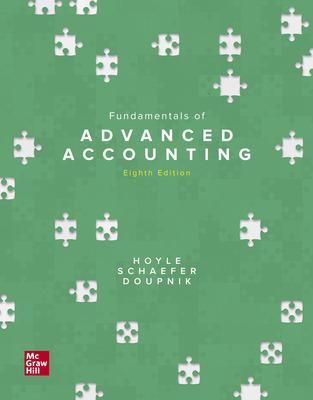Question
QUESTION 28 The company has maintained its allowance for doubtful debts at 3% of accounts receivable over the past few years, based on the estimated
QUESTION 28
The company has maintained its allowance for doubtful debts at 3% of accounts receivable over the past few years, based on the estimated recoverability of outstanding debts.The effect of COVID-19 continued to impact operations throughout the 2020 financial year, with a noticeable slowing down in receivables turnover.The Sales Manager noted that several customers had contacted Hunt Ltd to discuss extended repayment terms.The Financial Accountant has proposed that the allowance for doubtful debts be increased to 8% of accounts receivable to more accurately reflect its net realisable value.
The following balances appeared in the accounting records of Hunt Ltd for the year ended 31 December 2020:
2020 2019
Accounts receivable 2 900 000 2 400 000
Allowance for doubtful debts 87 000 72 000
Additional information:
The company has maintained its allowance for doubtful debts at 3% of accounts receivable over the past few years, based on the estimated recoverability of outstanding debts.The effect of COVID-19 continued to impact operations throughout the 2020 financial year, with a noticeable slowing down in receivables turnover.The Sales Manager noted that several customers had contacted Hunt Ltd to discuss extended repayment terms.The Financial Accountant has proposed that the allowance for doubtful debts be increased to 8% of accounts receivable to more accurately reflect its net realisable value.
Required:
Drawing on Positive Accounting Theory explain whether management would prefer to increase the allowance to 8% or to maintain the allowance at 3%.In your answer you should indicate management's likely preference from both an efficiency perspective and an opportunisticperspective.(4 marks)
QUESTION 29
The company has maintained its allowance for doubtful debts at 3% of accounts receivable over the past few years, based on the estimated recoverability of outstanding debts.The effect of COVID-19 continued to impact operations throughout the 2020 financial year, with a noticeable slowing down in receivables turnover.The Sales Manager noted that several customers had contacted Hunt Ltd to discuss extended repayment terms.The Financial Accountant has proposed that the allowance for doubtful debts be increased to 8% of accounts receivable to more accurately reflect its net realisable value.
The following balances appeared in the accounting records of Hunt Ltd for the year ended 31 December 2020:
2020 2019
Accounts receivable 2 900 000 2 400 000
Allowance for doubtful debts 87 000 72 000
Additional information:
The company has maintained its allowance for doubtful debts at 3% of accounts receivable over the past few years, based on the estimated recoverability of outstanding debts.The effect of COVID-19 continued to impact operations throughout the 2020 financial year, with a noticeable slowing down in receivables turnover.The Sales Manager noted that several customers had contacted Hunt Ltd to discuss extended repayment terms.The Financial Accountant has proposed that the allowance for doubtful debts be increased to 8% of accounts receivable to more accurately reflect its net realisable value.
Required:
Assume that Hunt Ltd has a high debt/equity ratio and is currently close to breaching its debt covenantrequirements.Explain what the debt hypothesis would predict is the likely preference for managers under this scenario: to maintain the allowance at 3% or to increase it to 8%
Step by Step Solution
There are 3 Steps involved in it
Step: 1

Get Instant Access to Expert-Tailored Solutions
See step-by-step solutions with expert insights and AI powered tools for academic success
Step: 2

Step: 3

Ace Your Homework with AI
Get the answers you need in no time with our AI-driven, step-by-step assistance
Get Started


